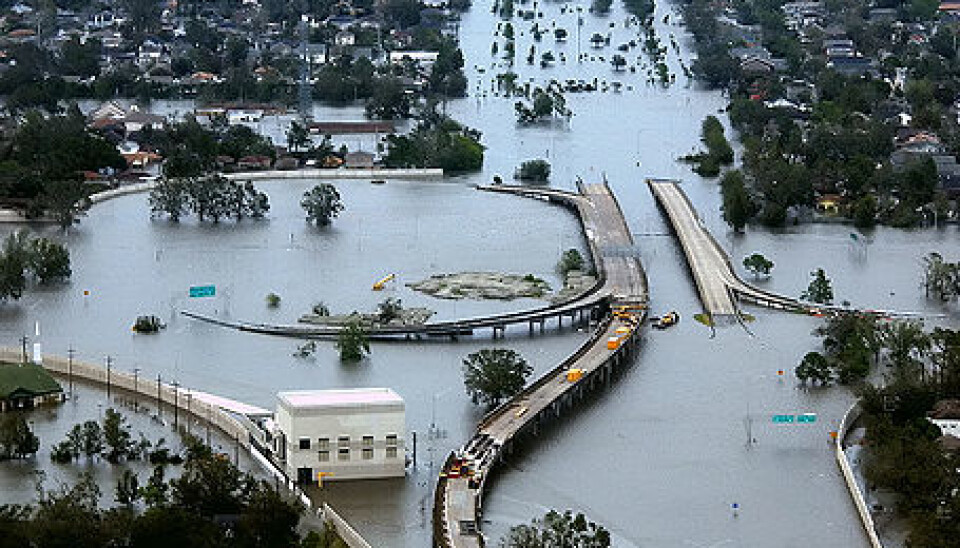This article was produced and financed by The Research Council of Norway

Gaming technology for calculating floods
Norwegian researchers have borrowed a page from game developers to devise simulation technology that can help reduce the damage from catastrophic floods.
Denne artikkelen er over ti år gammel og kan inneholde utdatert informasjon.
Watch the simulation of actual and synthetic floods, including the 1959 collapse of Malpasset Dam in France that claimed more than 400 lives. The town of Fréjus was inundated, as depicted late in the video. (Simulation: doctoral research fellows André R. Brodtkorb and Martin L. Sætra)
Three-dimensional simulations of natural phenomena such as tsunamis and floods require tremendous computing capacity – and even then, clear-cut answers are slow to emerge. But now researchers at SINTEF ICT in Oslo have developed methods that cut that waiting time substantially.
The new methods simulate how floods spread and the key lies in using computer graphics cards.
Learning from computer games
Advances in computer game technology depicting graphics-heavy virtual worlds has led to the development of sophisticated graphics cards.

“Previously, only the computer’s main processor was used to run calculations. This required many computers to carry out the type of calculations we work with,” says Jens Olav Nygaard of SINTEF ICT.
“Now we use the computers’ graphics cards as well. These can process more calculations simultaneously – so we extract far higher capacity from each computer,” continues Nygaard.
Faster than a Mississippi flood
During a research stay at the National Center for Computational Hydroscience and Engineering at the University of Mississippi, two Norwegian doctoral research fellows in the project developed a code that speeds up the simulation of shallow-water waves several hundredfold.
“The simulation is the first of its kind that can be run faster than the flooding along the Mississippi River actually occurs,” explains Nygaard. “If a dam breaks and we enter this into the simulation program, we can calculate how the water will flow, including water levels, faster than it occurs in reality. Based on the simulation we can determine which areas may need to be evacuated.”
To speed things up the researchers have developed a code to get the most from the computer’s graphics card. Data that describes the terrain has to be entered in advance.
Many application areas
The simulations can also be used for flood-prone areas where other conditions such as landslides may cause flooding. All that is required is the input of a different data set. It is also conceivable that terrain data can be collected from other sources such as Google Earth.
The method could also streamline the visualisation of petroleum reservoirs based on data collected from the seabed. This is another application area that requires processing of massive amounts of data.
“We still need powerful computers,” says Nygaard, “but with our technology the simulation process goes much faster than before.”
Lower-cost, easier on the environment
The new computing methods are not only fast, they are also cheaper.
When the graphics card is used to run many parallel calculations simultaneously, there is less heat build-up in the hardware. So less energy is required compared to calculations run serially on the main processor.
"This makes the method both cheaper and more environment-friendly,” concludes Nygaard.
Nygaard headed the project that received funding under the Research Council of Norway’s Research Programme on Core Competence and Growth in ICT (VERDIKT).
-----------------------------------------------------------
Read the article in Norwegian at forskning.no
Translated by: Darren McKellep/Carol B. Eckmann






























